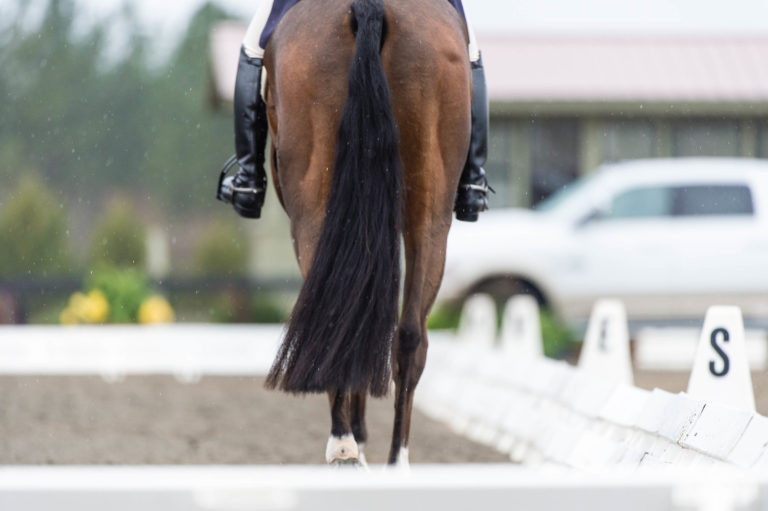When I work at a horse show, I usually don’t have to sign a liability waiver first. But, since I was helping out at a young horse show last weekend and would be in the enclosure where they would be working at liberty, it was a requirement. “Are you sure you’ll be okay in there?” asked the organizer. I found out that young horses are more respectful of a clipboard-wielding woman in a flapping raincoat than I would ever be worried about them.

Competitions and awards programs for young sport horses are wide and varied in this country and are usually held in conjunction with a larger show or awards set-up. So this was a bit different, a competition for young horses that was just that – only babies, well youngsters through 5, with some extra stuff for horses up to 8. There were jumping classes and flat classes. But the ones that fascinated me were the “in-hand” and jump-chute classes.
The Young Horse Show Finals has a series of qualifiers – the one furthest west is in Missouri – with the finals at the Tryon International Equestrian Center, in North Carolina, sponsored by Spy Coast Farm. I have “in hand” in quotes above because that class was also at liberty. The horse was led into an enclosure by itself and judged in the normal way for conformation. Then the horse was turned loose to move freely. The obvious advantage over the usual triangle presentation was that the horse could be seen at the canter. The disadvantage was that the horses could be pretty frisky. If a horse had good balance, however, it was very clear. The horse was then caught and, if also entered in the free jump class, was presented through a jump chute that ran along the back of the enclosure.
One interesting aspect of the setup was that the horse’s own handler had to stay out of the enclosure. Only professional handlers associated with the show were allowed inside, clearly a safety measure. The handlers kept the horses moving during the at-liberty phase and were adept at catching them up at the end. But what really caught my eye was how skillfully each horse was presented to the jump chute – a running start if necessary or being led quietly to the first fence and then released. They went through between three and six times, with the jumps adjusted by ground rails and width when needed to show the horse off to its best.
I was particularly enjoyed watching Quinnten Alston and his graceful way of presenting each horse to its best advantage. Alston works for Hilltop Farm and shows young horses at major shows, particularly at Dressage at Devon. He is athletic enough to move right in time with a young horse in full trot but also subtle enough to match the tempo of the walk perfectly as well, a pas de deux of horse and handler.











